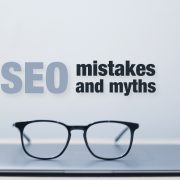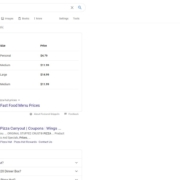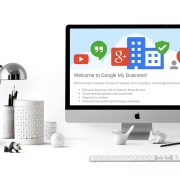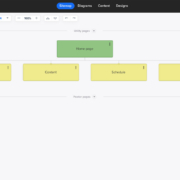The Ultimate Local SEO Checklist For Your Business
Local SEO has become the key to customers finding nearby businesses, because, without a listing in Google, your business may not get the same traffic as your competitors who have optimized for local SEO. While many think that it’s as simple as adding your business to Google Maps, unfortunately, it’s a bit more technical than that.
In today’s landscape, your business absolutely needs to have a competitive website, especially with the rate of online shoppers and research. Recent studies show that 81% of retail shoppers research online before putting their credit card down for anything.
So, if you want to know how to dominate local SEO, you have to pay attention to how customers get information. This local SEO checklist will help you make sure nothing gets left out of your strategy!
1. Add Info to Google My Business
The first step for any business is to check their Google listing and make sure the information is accurate. If you don’t already have your business added to Google, then go to google.com/business to get started.
Once your listing is set up, confirm that all information is accurate and then go beyond the basics to add photos, videos, website links and reviews.
Check to make sure your Google My Business listing has the following:
- Correct business name and logo
- Accurate address, phone number, email address, and other contact information
- Verified Google listing
- Friendly, welcoming description about your business
- Pictures of your business, including storefront, inside the store, products and happy customers
- 1 to 2 relevant keywords (helps your profile rank higher)
- Reviews (which you can get by reminding customers to leave one on Google – or – send a Google review link after a purchase/service)
If you have multiple businesses, you can add Google My Business to each one as long as they each have a different phone number. Never pay for fake reviews or request too many reviews at one time, and never force good reviews with incentives (now punishable according to Google’s policy as of 2019). Also, don’t forget to flag spam/inappropriate reviews, and respond to negative reviews from a manager account (apologize and take the conversation to a private space by offering a phone number or email address where the reviewer can receive additional assistance).
In addition to Google My Business, you should also consider claiming business profiles on other review sites such as Yelp, TripAdvisor, YellowPages, Zagat, Bing Places and other industry-specific directories that are often used by your customers.
If this process seems a bit overwhelming, especially if you’re already managing multiple aspects of your business, remember that a local SEO agency can help manage these profiles (particularly if you run into struggles with reputation management).
2. Optimize Your Website
Once customers start searching for your business online, they will inevitably wind up on your website. But, what’s the first thing these local searchers should see?
There’s an art behind high-converting websites, and a local SEO company can help you implement new, technical SEO requirements that will positively impact conversion rates and customer experience.
Here are some of the ways you can optimize your website:
- Perform a site audit with local SEO in mind.
- Check your “Contact Us” page and other areas with contact information to make sure it’s correct.
- Lengthen your “About” page and add more information to help customers.
- Make sure your “NAP” (name, address and phone number) are clearly visible and accurate.
- List all addresses, if you have multiple locations, on a store location page.
- Add a Google Map to your contact page with a location description.
- Add schema structured data markup so that Google can easily crawl and find your local business.
- Mention local events on your business blog and possibly add a calendar if you have a storefront with regular events.
- If you have less than 10 locations, consider adding each one with their respective address and phone number to your website footer.
- Link to all location pages, if available.
Remember: Don’t Forget to Add New Content
In addition to optimizing your website, you also need to create and publish content regularly. This means that ideally, your business also has a blog and social media channels where you share content (consistently!).
Here are some content tips to incorporate if you have the resources and it’s applicable to your business. Some of these are extremely important if you want to know how to dominate local SEO.
- Use a company blog to create content about your business, making sure to mention local neighborhoods, events and public figures when appropriate to improve your local SEO.
- Never scrape content from other websites unless you cite and attribute the quoted content.
- Avoid publishing thin or useless pages.
- Create a page for each of your locations with NAP information, photos, Google Map and a description with local keywords.
- Add testimonials from customers to your home page, about page, contact page and unique store pages.
- Offer local area specials using a calendar.
- Add helpful tips and guides for local audiences.
- Interview local experts outside of your company who are well-known in your local area.
As you build up your content, don’t forget to create video and image content as much as you can. You should be sharing information from your site, blog, or live social feed whenever possible.
3. Build Up Your Social Media Presence
Everyone shares their favorite companies and products on social media. For businesses with low engagement and no reviews, you probably don’t see the impact of social media as much as competitors who are actively posting and engaging with customers every day on Twitter, Facebook, Instagram, Pinterest and LinkedIn.
If you haven’t already claimed your social media profiles on every network, it’s the first step in improving your local social media searches.
While you can’t update every page, you should have a profile with the correct contact information, website links, photos, videos and a few posts to show that you are active.
Often, local SEO services can also assist with social media marketing and content creation (which can be a huge asset if you don’t have someone dedicated to improving your social media presence).
This quick checklist can help you complete a social media audit and start engaging with potential customers:
- Set up a Google Sheet or Excel spreadsheet with links to all of your social media profiles.
- Conduct a search on all social media sites for your business name, and then claim and delete all duplicate pages that you do not own.
- Check that all profiles have current and accurate information, including NAP, description, new photos and new posts.
- Look at reviews and determine whether to turn off reviews, which can be done in your Facebook Business page settings.
- Create a content calendar that includes local events and promotions.
- Use a third-party social publishing tool like Hootsuite or SocialReport.com to schedule content and promotions in advance.
- Build a unified omnichannel presence between social networks so that your brand’s logo, graphics, and messaging all match.
- Invest in online reputation management if reviews, comments and ratings occur frequently.
- Share more user-generated content, such as video testimonials from your customers.
- Create automated responses for your Facebook messenger and assign customer service to handle customer questions via chat.
- Set up local Facebook business pages if you have multiple popular locations.
Good old-fashioned customer service is hard to come by, but it’s one way that you can make your social media stand out. Companies that offer more information to customers on their social media pages get more traffic to their main website.
You also want to make sure that you are addressing all customer needs in the real world, as well. How is your customer experience onsite and online? If customers are able to easily get what they need and have a great time doing so, then you should have no problem getting engagement, positive reviews and shares.
4. Get Cited Across the Web
Google counts the number of times that your business name, address, phone and website are mentioned across the web. As your customers mention your business name, your site will often rank higher for key terms.
However, citations mainly refer to how many profiles you have on directories and social media sites that list your NAP and website. You can find a list of all citations by category to get started.
These are some basics to follow with citations:
- Set up your citations manually and keep track of all your profiles within a spreadsheet.
- Build unique profiles for all physical locations, including their separate address, phone number and specific page URL.
- Be accurate and consistent in your street listing and phone number (and make sure that they link on mobile).
- Build citations in local directories first, such as business listings within your local Chamber of Commerce and industry-specific sites.
- Remove any duplicate citation profiles.
As you build out your content, you should be able to link to a local landing page for any keyword and city combination if you have multiple locations. If possible, positive reviews, updated content and photos should be added to your profiles.
Finally, make sure that you are getting reviews from customers by including email marketing in your strategy. You can follow up after a purchase with a link to review the product. Just remember that this could lead to a potentially negative review, so it’s important to always have an online reputation management tool or social media manager to ensure negative reviews are handled quickly.
Need Local SEO Services?
Business owners can’t do it all, and we understand that. Whether you need a strategy and tactical guidance or full-service support, our local SEO company is here for you. Talk to us about your online presence and how we can help you grow your reach by the thousands. We’re here for you!











